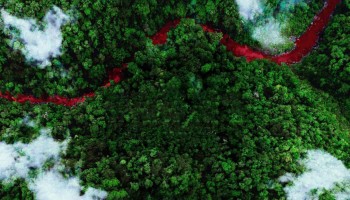The current Minister of Energy and Mines, Alberto Pimentel Mata, and his predecessor Luis Chang Navarro, have been accused of allowing the Fénix mine to extract nickel against Guatemala’s top court ruling that extractive operations were not allowed to continue.
Fénix mine is owned by the Swiss Solway Investment Group and the Guatemalan Nickel Company (CGN).
During the administration of former President Jimmy Morales in mid-2019, Guatemala’s Constitutional Court had ordered the suspension of the Fénix operations to protect the rights of the Mayan Q’eqchi’ indigenous people who claimed the mine’s extraction license was illegal because it was issued without proper consultations with them.
However, the mine had never stopped operating with the complicity of first Chang Navarro and later Pimental Mata under the Alejandro Giammattei administration.
In a leaked letter from March 2020, the CGN president wrote to Solway’s co-founder that the mine was still operating despite opposition from “peasants” and “radical groups.”
Local residents staged protests several times, demanding a clean environment and better water. In 2017, a member of the Mayan Q'eqchi' was killed during protests against the contamination of Lake Izabal caused by mining activities.
Guatemala’s Constitutional Court suspended Fénix’s extraction license and in 2021, Pimentel Mata ratified the decision.
But satellite images provided by Guatemalan watchdog the Extractive Industries Observatory showed the mine’s trenches continued to expand not only after the court’s initial ruling in 2019, but also after the decision was ratified in 2021.
The manager of Extractive Industries Observatory Guadalupe García told OCCRP that mining licenses allow exploitation within 20 square kilometers but that she thinks there is a legal vacuum because if a mining company presents a technical report justifying an expansion, it can get the right to exploit a larger area. The Fénix mine allegedly took advantage of that and expanded its range to about 246 square kilometers or 12 times more than the normal size of a licensed area, she added.
Solway denied claims that the mine had caused any pollution, saying the company complies with Guatemalan law and international regulations. Shortly after OCCRP’s partners published a series of stories about the issue, the company released a statement disputing the findings.
“Our performance is carefully monitored by both national regulatory bodies and international auditing and certification agencies,” as well as Swiss authorities, said Solway’s co-founder and CEO, Dan Bronstein. “We refute any allegations brought up without factual basis.”
However, the Fénix mine allegedly leached contaminated water into Lake Izabal. A biologist told OCCRP the lake had been contaminated with heavy metals, such as nickel, chromium, iron, aluminum, and mercury, which could cause toxicity in plants and in animals like fish.
Despite the apparent infractions, Guatemalan authorities supported Solway. The environment ministry said its regulations “contain the guidelines, structure and procedures necessary to support the country’s sustainable development in environmental matters.”
In January this year, Mata allowed Fénix to restart its extractive operations after an alleged “consultation was carried out with legitimate representatives of the communities” and CGN representatives, coordinated by his ministry. Some local groups, however, complained that they had been excluded from these consultations, such as the Guild of Artisanal Fishermen, García said.
The value of these consultations is debatable. Leaked documents showed CGN used money to sway local opinion in its favor when the government held consultations over the mine’s environmental impact, OCCRP reported. One spreadsheet described some of the payments as for the “purchase of community leaders.”






